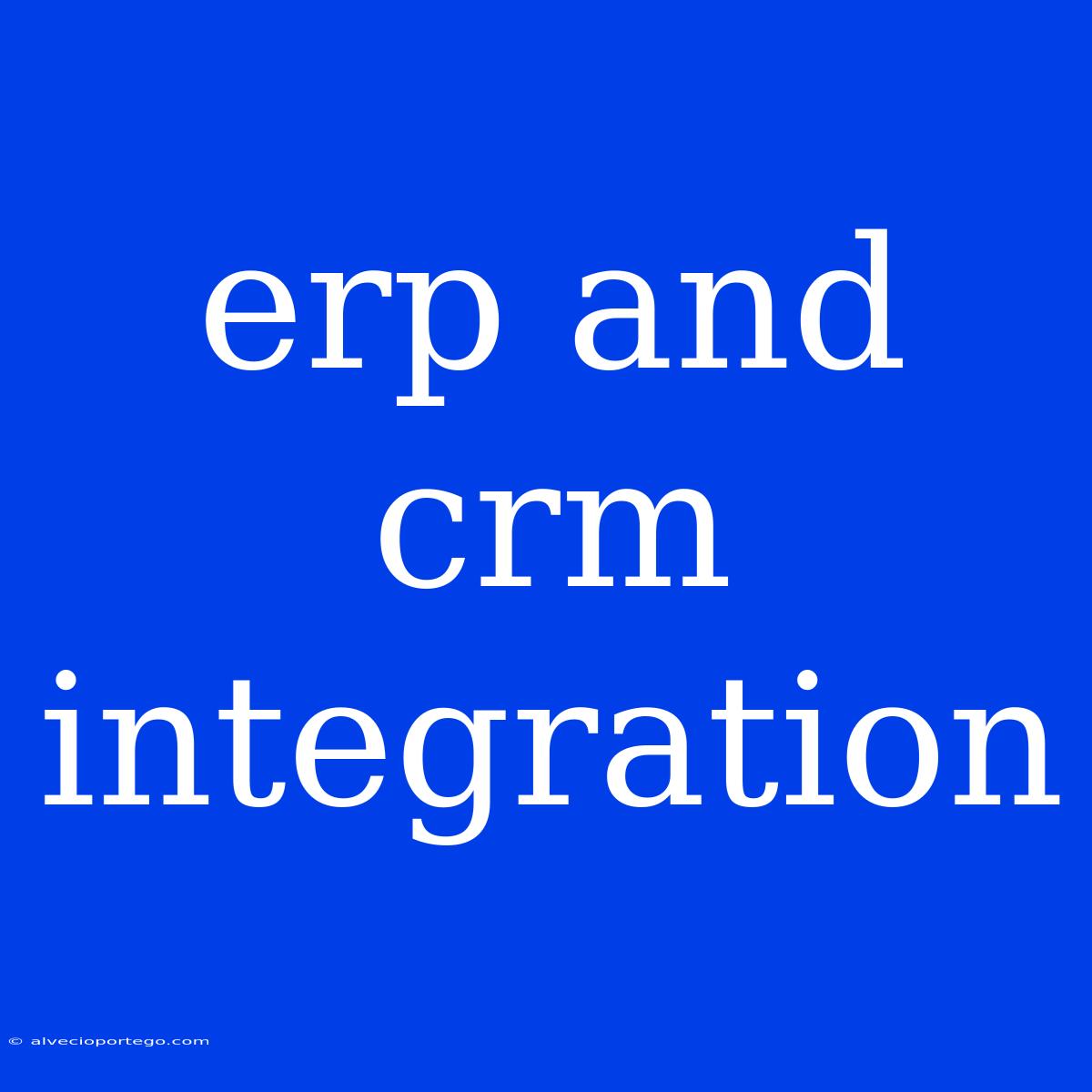Integrating ERP and CRM: A Powerful Partnership for Business Growth
In today's competitive business landscape, organizations are constantly seeking ways to streamline operations, improve customer experiences, and gain a competitive edge. Integrating Enterprise Resource Planning (ERP) and Customer Relationship Management (CRM) systems offers a powerful solution to achieve these goals.
What is ERP and CRM?
ERP (Enterprise Resource Planning) systems act as a centralized hub for managing an organization's core business processes, encompassing functions such as:
- Finance: Accounting, budgeting, financial reporting
- Supply Chain: Procurement, inventory management, production planning
- Human Resources: Payroll, recruitment, employee management
- Sales and Marketing: Order processing, customer service, marketing automation
CRM (Customer Relationship Management) systems focus on managing interactions with customers, including:
- Sales: Lead generation, opportunity management, sales forecasting
- Marketing: Customer segmentation, campaign management, email marketing
- Customer Service: Case management, knowledge base, support ticketing
The Benefits of ERP and CRM Integration
Integrating ERP and CRM systems offers numerous benefits, including:
1. Improved Customer Insights:
- Unified customer view: By combining customer data from both systems, organizations gain a comprehensive understanding of their customer base, enabling them to personalize interactions and tailor marketing campaigns.
- Real-time data access: Integrating systems provide real-time insights into customer behavior, allowing for proactive engagement and timely support.
2. Streamlined Operations:
- Automated workflows: Integrating ERP and CRM systems automates tasks such as order processing, inventory updates, and customer service requests, leading to greater efficiency.
- Reduced data entry: By eliminating duplicate data entry, organizations save time and minimize errors.
- Improved data accuracy: A single source of truth for customer and business data ensures consistency and accuracy across the organization.
3. Enhanced Sales and Marketing:
- Targeted marketing: CRM data can be used to segment customers and deliver targeted marketing messages through ERP channels.
- Improved sales forecasting: ERP data on inventory levels and production capacity can be used to inform sales forecasts and ensure accurate lead times.
- Efficient order fulfillment: Integrated systems streamline order processing and ensure timely delivery, improving customer satisfaction.
4. Better Customer Service:
- Faster response times: Integrated systems enable customer service representatives to access relevant customer information and order history, leading to faster and more efficient problem resolution.
- Personalized support: CRM data can be used to provide personalized support and address customer needs proactively.
5. Increased Profitability:
- Reduced operational costs: Automation and streamlined processes lead to cost savings across departments.
- Improved customer retention: Enhanced customer experiences result in increased loyalty and repeat business.
- Increased sales and revenue: Targeted marketing, improved sales forecasting, and efficient order fulfillment drive sales growth.
Challenges of ERP and CRM Integration
While integration offers significant benefits, it also presents challenges:
- Complexity: Integrating complex systems requires technical expertise and careful planning.
- Data Migration: Moving data between systems can be time-consuming and require extensive data mapping.
- Compatibility Issues: Ensuring compatibility between different platforms and systems can be challenging.
- Cost: Integration requires upfront investments in software, services, and training.
Tips for Successful ERP and CRM Integration
- Choose the right systems: Select systems that are compatible and meet your specific business needs.
- Develop a clear integration strategy: Define integration goals, scope, and timelines.
- Invest in skilled resources: Engage experienced consultants and developers to manage the integration process.
- Start small and scale gradually: Begin with a pilot project to test the integration and identify areas for improvement.
- Communicate effectively: Keep stakeholders informed of progress and address any concerns.
Conclusion
Integrating ERP and CRM systems is a powerful investment that can transform an organization's operations and drive growth. By combining the strengths of both systems, businesses can gain deeper customer insights, streamline processes, enhance sales and marketing efforts, and improve customer service. With careful planning and execution, ERP and CRM integration can unlock a world of possibilities for organizations looking to achieve lasting success.

